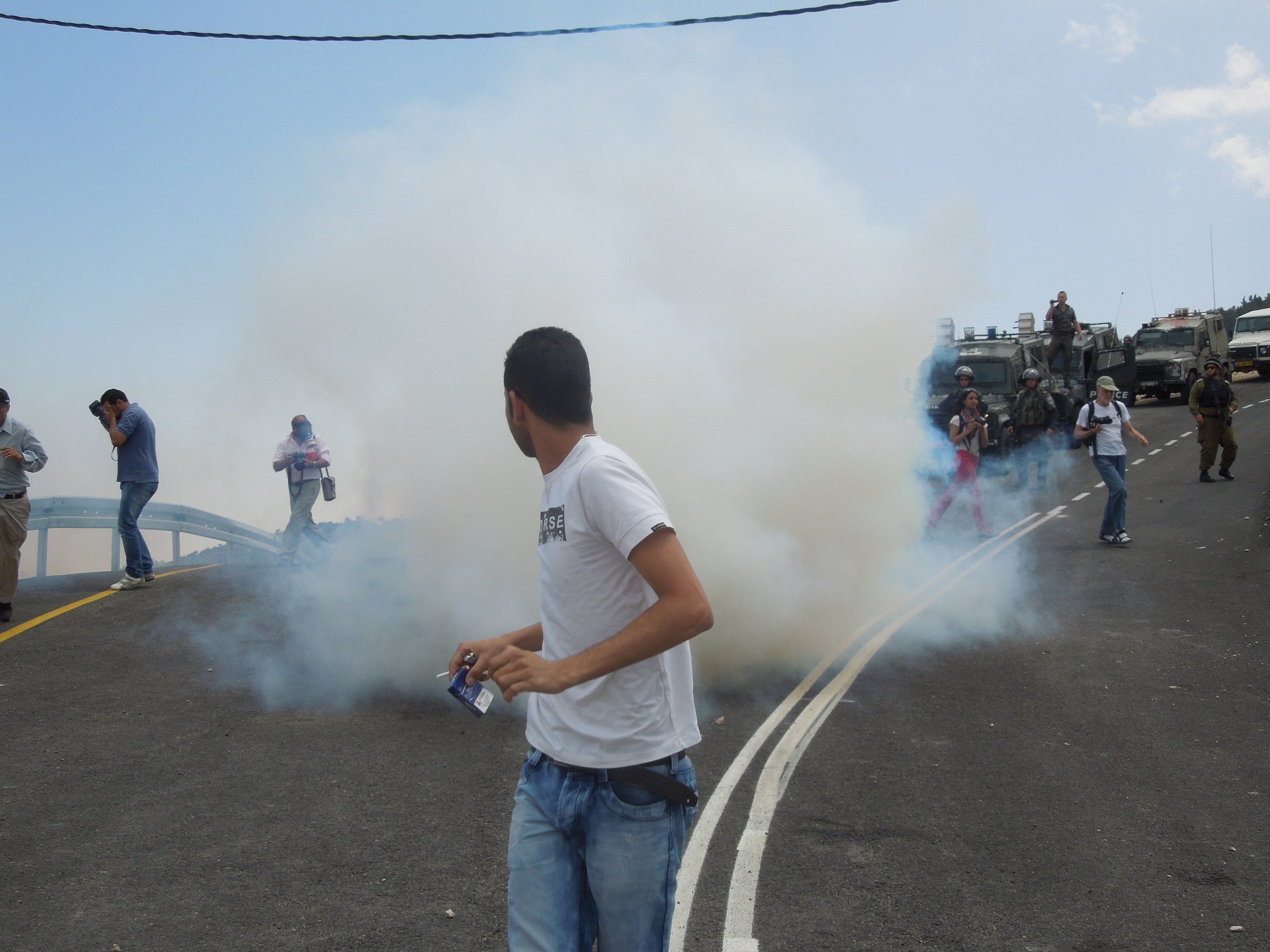Tag: Tear-Gas Canister
-
A Steadfast Prelude to the Nakba: Duheisha resists
15th May 2013 | International Solidarity Movement | Hebron, Occupied Palestine By Team Khalil On the 14th May 2013 , a day before the Nakba, on the edge of Bethlehem, a demonstration to remember the day of the catastrophe in 1948 marched from Duheisha refugee camp to the entrance of the village of Al-Khader. Demonstrators…
-
Beit Ommar: steadfastness and non-stop resistance against Israeli occupation
12th May 2013 | Beit Ommar Popular Movement, Beit Ommar, Occupied Palestine On Friday 10th of April, tens of heavily armed Israeli occupation troops clashed with Beit Ommar’s defenseless youth, armed only with eagerness for freedom. Israeli forces shot countless tear gas canisters towards the young people, other civilians’ homes and shot numerous rubber-coated steel bullets,…
-
Protest against new road block in the village of Al Walaja
11th May 2013 | International Solidarity Movement | Al Walaja, Occupied Palestine By Team Khalil On Friday 10th May, Palestinians from the village of Al Walaja protested against a new road block, placed by the Israeli army in one of the two roads giving them access to Bethlehem. The iron barrier that was placed earlier…

